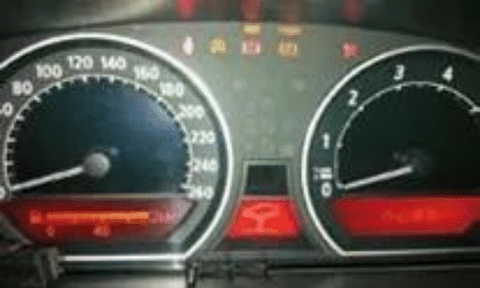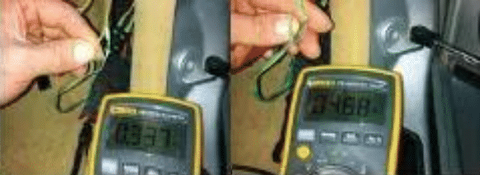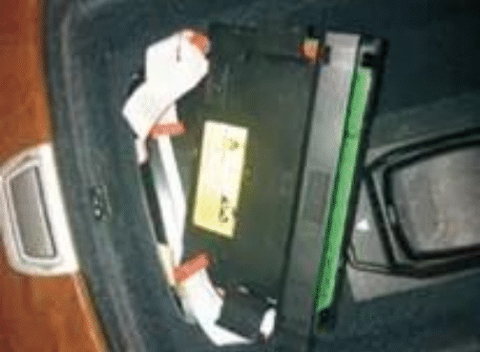[Repair Case] BMW E66 all instrument warning lights are illuminated.
Posted by Tony Brown on
Issue: The customer comes to the store stating that all instrument warning lights are illuminated (as shown in Figure 1), yet the car drives normally.
Figure 1 Instrument warning panel (showing all lights on)
Model: E66, equipped with M54 engine and 6HP-19 transmission.
Driving mileage: 98281 miles
Diagnosis: Use ISID to detect fault codes and found the following:
CDAB, A389, E107, 5EFE, 5142, A383, A3AA, 9328, 51B9, D707, E287
According to the above fault code analysis, there are several possible causes: ①Damage to multiple control modules or short circuits within a single control module; ②The K-CAN bus system is open or short-circuited; ③Incorrect bus voltage.
Moving from the simple to complex start by measuring the K-CAN voltage first. The bus’s parallel contact of this car is located at the passenger’s foot pedal, where the K-CAN voltage can be measured: K-CAN high voltage is about 4.5V (green line); K-CAN low voltage is about 0.6V (yellow line), as shown in Figure 2.
Figure 2 K-CAN line position
The voltage value on the K-CAN can be measured here, and the actual voltage value CAN is 0.2V low, while the K-CAN is 2.47V high, as shown in Figure 3. At this point it’s possible that all fault lamp alarms are caused by abnormal voltage. This abnormal voltage is probably caused by an internal short circuit of a control module on the CAN line or a short circuit and open circuit of the CAN line itself. Since access to the bus on the car body is limited and concealed, and it is difficult to check. We first consider whether there is a problem with the control module. It can be seen from Figure 2 that most of the control modules are connected in parallel on the bus through two interfaces, so can we disconnect one of the bus interfaces and then use the diagnostic instrument to detect which control modules cannot be detected, so that we can reduce the fault range to the smallest. If the voltage does not change when we disconnect one of the interfaces, the control module is not faulty, and we must continue to diagnose the problem. 

Figure 3 Voltage on the K-CAN line
Reconnect the bus, and then disconnect another bus interface to measure the voltage as shown in Figure 4. 
Figure 4 Another interface K-CAN line voltage
With a diagnostic instrument, only one FBZF (rear compartment control center) cannot be detected, indicating that this is the one that is malfunctioning. After starting the car this time, the warning lights did not illuminate.
Troubleshooting: Due to the internal short circuit of the control module affecting K-CAN voltage and bus transmission data errors, all instrument warning lights are illuminated. Replace the FBZF (the location is shown in 
Figure 5 and program, and then the fault has been resolved.
Figure 5 FBZF control module location
Fault Summary: When encountering a problem, the idea of solving it must be clear. The root cause of the fault must be found step by step by working from the simplest to the most complex in order to solve the problem most efficiently.


